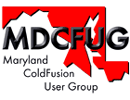 |
 |
 |
|
|||||||||||||||||
 |
|
|||||||||||||||||||
|
 Speakers
Speakers
Charlie Arehart Jo Belyea-Doerrman Tim Buntel Raymond Camden Christian Cantrell Sandra Clark Joey Coleman Sean Corfield Robert Diamond Michael Dinowitz Steve Drucker David Epler Joseph Flanigan April Fleming Ben Forta Shlomy Gantz Mark Gorkin John Hamman Hal Helms Simon Horwith Larry Hull Jeff Houser Chafic Kazoun Matt Liotta Tom Muck Rey Muradaz Nate Nelson Samuel Neff Jeff Peters Bogdan Ripa Neil Ross Margarita Rozenfeld Stephen Shapiro Michael Smith Geoff Snowman Jeff Tapper Dave Watts
|
|
||||||||||||||||||
|
|
| 1 | 2 | 3 | 4 | 5 | 6 | 7 | 8 | 9 | 10 | 11 | 12 | 13 | 14 | 15 | 16 | 17 | 18 | 19 | 20 | 21 | 22 | 23 | 24 | 25 | 26 | 27 | 28 | 29 | 30 | 31 | 32 | 33 | 34 | 35 | 36 | 37 | 38 | 39 | 40 | 41 | 42 | 43 | 44 | 45
Back To Interview list Michael Smith: I am talking with Geoff Snowman of Microsoft about his talk "CF and .Net" at CFUN-04. Why should ColdFusion programmers care about .Net? Geoff Snowman: It's easy to get the idea that an environment needs to be either all Java, all ColdFusion, or all .NET. Big organizations, such as government agencies and Fortune 500 companies, just don't work that way. When I've consulted for large companies, I always find a mix of technologies. Even if they wanted to move to a single platform throughout the organization, they simply can't afford to throw everything out and start again. Once you take it as given that you're dealing with a mixed environment, you have to start thinking about ways to make all these heterogeneous systems work together. For a long time, this was a very hard problem, and most of the solutions were expensive and proprietary. Over the last few years, we've seen the emergence of a whole new set of standards for solving interoperability problems. MS: So you're talking about XML? GS: XML was an important stepping stone. It gave us a standard format for data on the wire. XML by itself isn't enough, however. We need a way to define the XML messages that are sent back and forth between systems, so that one system can publish an API and another system on an entirely different platform can understand the API. Standards like Web Services Description Language, which is usually referred to as WSDL (pronounced "whiz-dull"), are important here. Another important standard is Simple Object Access Protocol, known as SOAP. MS: What's the state of standardization in this area? GS: We have a really good set of core standards in XML, XSD, WSDL, SOAP, and UDDI, that are accepted across the entire industry. .NET, Cold Fusion, J2EE, and most other computing platforms have implemented these core standards, and production applications are using them today to solve real integration problems. There's a lot of new work being done to go beyond the basics and layer additional specifications on top for areas like routing, security, and transactions. A great example of this is Web Services Security 1.0, which became an OASIS standard just last week. MS: So what are you going to cover in your session? GS: I'm going to start with an introduction to .NET, just to set a baseline, and then I'm going to talk about the web services stack. I'm going to build a web service using Microsoft's Visual Studio .NET, and then use Dreamweaver to create a CFM that can talk to the web service. After that, I'm going to build a web service using a ColdFusion CFC, and then create an ASP.NET web page that calls it. I'll also talk about some of the standards work that's being done, and the importance of organizations like WS-I, the Web Services Interoperability Organization. My goal is to demonstrate that it's entirely possible to get .NET applications and ColdFusion applications communicating through web services. The bottom line is that if you have a mixed environment, you don't need to separate your applications into silos that can't communicate. MS: I can't wait to see that demonstration, I'll see you there. GS: I'm looking forward to it. |
 |
|
|||||||||||||||||
| Home | Topics | Speakers | Directions | Spread the Word | Register |
© Copyright TeraTech Inc 2003
405 East Gude Drive Ste 207 Rockville MD 20850
301.424.3903 Fax 301.762.8185 www.teratech.com
Please send comments/questions to [email protected]
For sponsorships or registration, please send comments/questions to liz-cfun04 (at) teratech.com


































